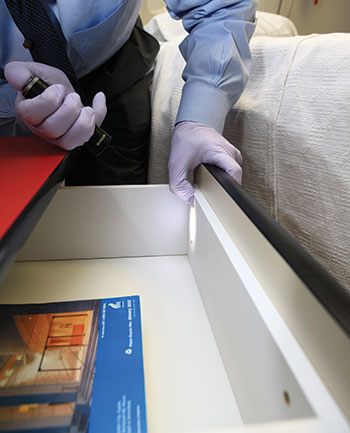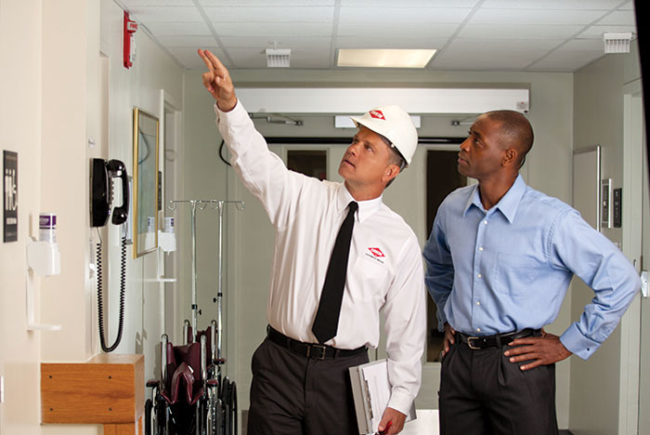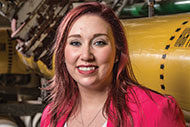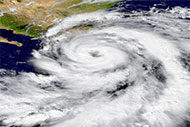
Knowing about how different pests can affect each type of facility is key to controlling them.
Health care facilities come in more varieties and serve a wider array of functions than ever before. Nursing homes and assisted living facilities play a much different role than doctors’ offices and clinics. Outpatient centers and hospitals can be more different than they are alike.
And that’s just from looking at the patients these facilities serve. When looking at the operations at these facilities, the variances are even starker. But some differences are a bit more subtle.
When it comes to pest control in health facilities, for instance, one strategy doesn’t fit all. Each facility is different, and different environments feature hot spots with different pest issues.
Defining the threats
While integrated pest management (IPM) has become the health care industry standard [see sidebar, Page 42], pest management programs can — and should — look differently depending on the facility.
The pests themselves can be quite different, and many pose big threats to the health care industry.
Flies, ants and cockroaches are the most common pests found in health care facilities, according to a 2013 survey of Association for the Healthcare Environment (AHE) members, and all pests pose unique threats.
Cockroaches can pick up and transfer harmful bacteria. In certain situations, ants can as well. Cockroach droppings and cast skins can aggravate allergies and even cause asthma attacks, especially in children and sensitive individuals. Flies can spread microorganisms — some of which can cause diseases — when they land.
You may also like |
| Controlling pests in health care facilities |
| 2015 ES Department of the Year |
| Inspiring front-line ES workers |
|
|
Rats and mice also can cause serious health problems. According to the Centers for Disease Control and Prevention (CDC), rodents are known to spread bacteria like Salmonella and Escherichia coli, as well as more than 35 diseases worldwide, such as hantavirus.
A single female bed bug, which feasts exclusively on blood meals, can lay up to 100 eggs in a lifetime, and hatched nymphs can become reproductive several months later. Bed bug bites can cause minor to complex skin reactions and, in some cases, psychological concerns. While often linked to multifamily housing and the hospitality industry, bed bugs have become a growing concern in many types of health care facilities.
Not only can many pests spread dangerous bacteria that can cause diseases, but patients with weakened immune systems in health care facilities face a greater risk of infection.
Knowing about the pests and the threats they pose is one thing, but knowing how they can affect each type of health care facility is another.
Nursing homes and assisted living
Pest hot spots abound in nursing homes and senior living facilities, and the problems they cause can become severe. For example, an Illinois nursing home paid $250,000 in damages to the family of a patient who was infested with maggots. Other lawsuits related to bed bugs also have led to large settlements.
There are many places in assisted living facilities where pests can hide, and the hottest spot of all can be the patient room. Many residents bring in their own clothes and furniture, which can serve as a vehicle for pest entry. Once present, pest pressures can build, especially since many patients don’t require around-the-clock care. Kitchens, receiving areas and even parking lots can usher in pest activity.
Food preparation areas. In food preparation areas, all food should be put away in airtight containers, and spills should be cleaned up immediately. Environmental services (ES) professionals should make sure that employee break rooms are free of any crumbs or food left out in the open. ES professionals should be careful to check for spilled food or drinks in recycling bins — a favorite target for ants and roaches.
Exterior hot spots. All cracks and crevices should be sealed with weather-resistant sealant to keep pests outside. ES professionals should consider incorporating metal mesh to add extra protection against pests like rodents that gnaw and chew openings to gain entry. Weather stripping should be used around windows, and door sweeps should be installed on all entryways. Rats can squeeze through a hole the size of a quarter, mice through a gap the size of a dime and crawling pests through spaces barely noticeable to the human eye.
ES professionals can further deter flying insects by swapping out mercury-vapor lamps next to entryways with sodium-vapor lights. To draw them away even more, ES professionals should consider placing any mercury-vapor lighting at least 100 feet from facility entrances — pests are attracted to the source of light rather than the beam itself.
Also, trees must be kept trimmed, and plants should be at least 12 inches from the building to limit the chance that pests will use vegetation to access a facility. Standing water that could serve as a breeding site and drinking source must be removed. ES professionals also should cover garbage outside that could provide nourishment to pests like flies, mosquitoes and rodents.
Storage and receiving. Storage and receiving areas should be kept clean, well-lit and uncluttered, so pests don’t have places to hide. To help keep pests out of products and resources, all containers should be tightly closed and stored at least 6 inches off the floor and 18 inches away from walls. Cardboard boxes should be discarded whenever possible, as cockroaches can find shelter within the ridges of the corrugation.
Pests not only can squeeze under receiving doors, but also sneak in on shipments. ES professionals should make sure that exterior doors form a tight seal when closed and that all delivery trucks and incoming shipments are inspected immediately for pest activity.
Physicians’ offices and clinics
It may seem that doctors’ offices and clinics face fewer pest pressures than hospitals and nursing homes because there is less activity and commonly no living areas to worry about.
But pests are still a concern. Variables that come into play include the location, surroundings and size of the office complex. For example, some homes have been converted into doctors’ offices and clinics, which means that pest control considerations may be more residential-focused than office-focused.
There are many factors to consider in preventing pest activity — from maintaining vegetation and landscaping to being especially cautious about pests that are entering through cracks and crevices in attics or are being attracted to roof leakages.
Entrances. High-traffic entry points provide pests with a great opportunity to sneak into a clinic. In addition, guests and patients are known to bring pests like bed bugs and cockroaches with them in their personal belongings. Nevertheless, ES professionals can help to slow pests down and shut them out with the right defense.
If possible, automatic or double doors should be installed. Automatic doors keep frequently used entrances closed when not in use and give pests fewer opportunities to pass through. Double doors add another barrier that pests must surpass to gain access to a building. Again, door sweeps and weather stripping should be used to minimize any gaps.
Also, ES professionals should make sure air is blowing out of the facility’s entrances, not into them. They can work with an HVAC professional to ensure positive airflow, and regularly test this by holding a piece of paper in a doorway to see which way it blows. An air curtain that pests can’t fly through also can be created by vertically mounting fans on either side of a doorway.
Restrooms. Standing water and odors on restroom floors surrounding drains are attractive to a wide variety of flying and crawling insects. With this in mind, ES professionals should be sure to monitor for spills and standing water throughout the day.
They also should pay attention to the moisture in and around drains. When unused or used irregularly, dry drains actually can emit sewer odors that are attractive to pests, while wet drains can promote breeding. It’s important for ES professionals to find a balance by taking extensive action to give internal plumbing a thorough cleaning on a routine basis.
To prevent drains from emitting odors and encouraging infestations, ES professionals can regularly pour water down the drain. They also can use a drain insert that has a rubber elbow on it, which can help to prevent odors and pests from coming up through the drain.
Also, all cracks and crevices should be sealed around restroom fixtures, sinks and plumbing penetrations to prevent pests from taking up shelter in wall voids. Any faulty sinks and faucets should be repaired quickly to prevent leaks.
Trash disposal. ES professionals should work with their sanitation crew and waste management company to keep trash-handling areas free from clutter and accumulated waste. They also should require that dumpsters be cleaned and switched out regularly.
Inside, ES professionals should make sure trash cans are emptied and liners changed daily. Trash buildup — especially perishable trash — is a major attractant for flies.
Outpatient centers
Take the layouts of doctors’ offices, add procedure rooms and there are even more hot spots that make managing pests in outpatient centers no easy task. For surgery centers and other outpatient facilities, IPM solutions are worthwhile. When planning a program for these facilities, several areas must receive special attention.
Operating rooms. Three out of five AHE members who completed the 2013 pest control survey said that ants are the toughest pests to control in health care facilities.
Nowhere in these outpatient facilities is keeping ants out more important than in operating rooms (ORs). Just last year in Canada, a center had to cancel 20 surgeries because pests were found in an OR.
ES professionals should ask staff to report any ant sightings to pest management professionals immediately because many more can be nesting out of sight in walls and drains. Professionals also should create a written sanitation program and educate staff on the role they play.
Floors and drains. ES professionals should consider using an organic, professional cleaning solution to break down tough stains and grime on floors and around drains. Organic cleaners use naturally occurring enzymes and beneficial bacteria to degrade stains and grime, which can help to reduce the presence of drain flies.
If preventive techniques aren’t successful, chemicals may be needed. But chemical treatments for these crawling pests can be targeted and organic. ES professionals should consider repellents, which can keep ants and other crawling insects from cramped, hard-to-reach places. Sensing possible danger, pests retreat from the area when they come into contact with the repellent.
Baits come in different forms, including gels and bait pucks, and feature a combination of attractants. A pest management provider can apply these directly into infested areas, away from the public, offering a safer way to control the pests. Fly baits, insect light traps and fly traps also can be set up as nonchemical treatments away from patients and guests.
Better pest management
While every health care facility is different, there are certain steps ES staff can take to improve their pest management efforts.
Once a pest management provider is chosen, ES professionals should meet with them to discuss the roles of everyone involved. They also should establish pest management program goals and schedule times throughout the year to evaluate the program’s success and areas for improvement with their provider.
ES professionals also should work with their provider to train staff on the signs of pest activity and the roles they can play in keeping pests away — many providers offer training at no cost. Additionally, ES professionals should create a logbook to document pest sightings and treatments.
The more proactive ES professionals are with their pest management providers, the more effective the pest management program will be — regardless of health care facility type.
Ron Harrison, Ph.D., is an entomologist and director of technical services for Orkin LLC. He can be contacted at rharriso@orkin.com.
IPM for health care facilities
Integrated pest management (IPM) is a more targeted approach to pest control that focuses on proactive, nonchemical pest management techniques before employing chemical treatments only as a last resort.
IPM also is customizable to different facilities, taking into account geography, building conditions and even the time of the year. A tactic exists for each pest hot spot inside a health care facility to help guard it from pest pressures.
IPM focuses on proactive strategies like exclusion, facility maintenance, stringent sanitation practices and ongoing inspections to keep pests away. If chemical treatments are needed, nonvolatile and the least-toxic formulations are used, and only in precision-targeted areas.
As a result, IPM has become the recommended practice of the Association for the Healthcare Environment, Health Care Without Harm and Practice Greenhealth.
When it comes to implementing an IPM program at a facility, a good pest control partner can assess pest risks, implement a custom plan to manage pests and monitor for any problems that arise.
A partner also can help to establish action thresholds at which pest populations or environmental conditions indicate when facilities need to call for help.





